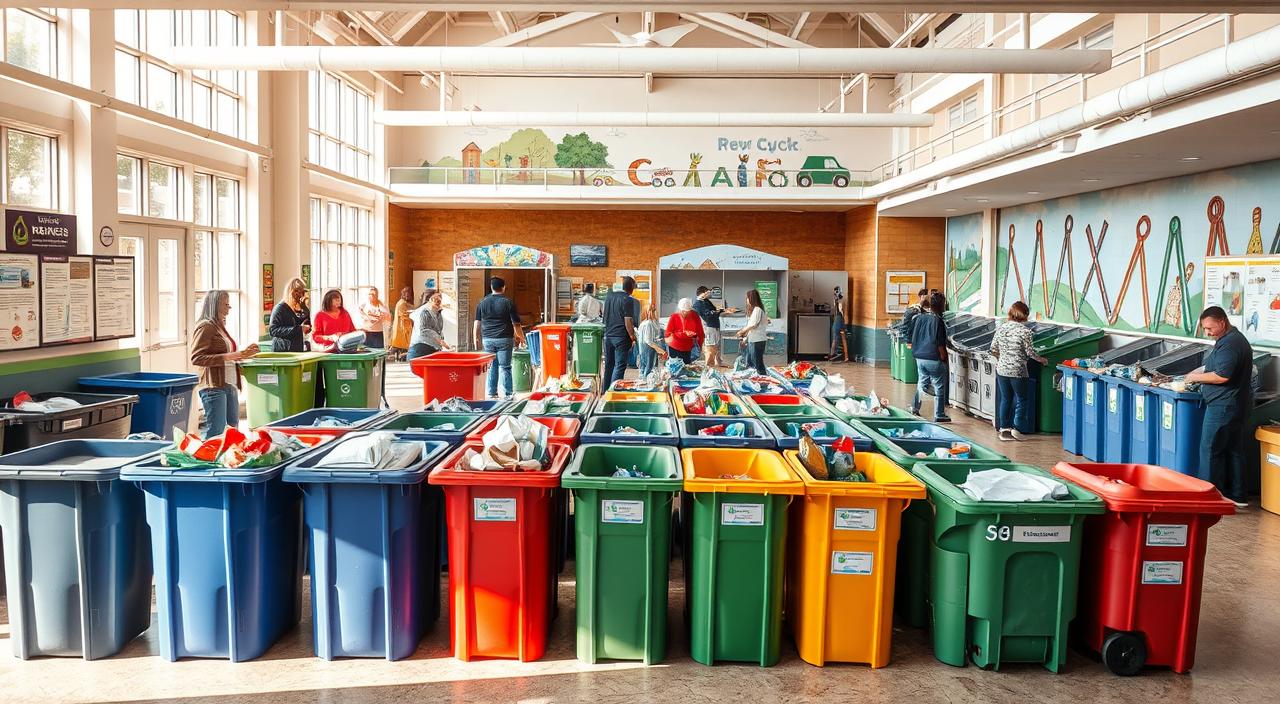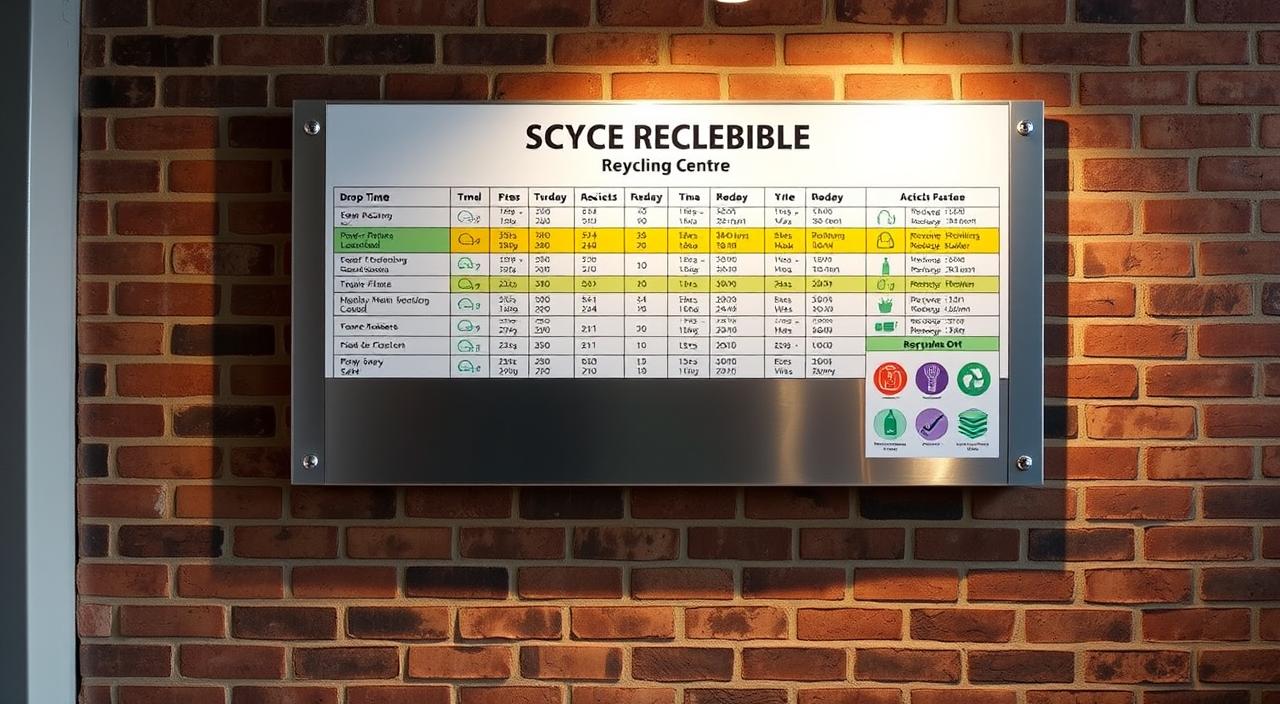Creating a community recycling hub in your neighbourhood is more than just a waste solution—it’s a grassroots effort that promotes environmental sustainability, strengthens local connections, and diverts valuable materials from landfill. From the Scottish Borders to the coastlines of Wales, British towns have demonstrated how localised waste initiatives succeed when tailored to community needs.

In this comprehensive guide, we’ll walk you through the practical steps to set up a recycling hub in your area—from planning and council coordination to day-to-day operations and resident engagement.
Key Takeaways
- Successful models already exist across the UK and offer valuable blueprints.
- Council collaboration ensures legal compliance and access to resources.
- Strategic locations and simple booking systems boost accessibility.
- Community education strengthens long-term environmental impact.
- Multi-stream funding can make the project financially sustainable.
Why Start a Community Recycling Hub?
Across the UK, household waste continues to rise. Standard council bin services don’t always accept bulk items, electronics, or hazardous materials. Local recycling hubs fill this gap by offering a place where residents can drop off items for reuse, recycling, or safe disposal.
They also become vital community assets—supporting education, reducing fly-tipping, and enabling eco-friendly habits at the neighbourhood level.
Understanding Local Recycling Needs
Before setting up a hub, research your local area’s current services and shortcomings. Common gaps include:
- Bulky furniture collection delays
- Lack of accessible electronics disposal
- Limited textile or garden waste recovery
Check your local council’s waste directory. For example, residents in North East Lincolnshire can access information via the Estuary Way Recycling Centre, which outlines accepted items and opening hours.
Planning Your Community Recycling Hub

To ensure success, start with the two most important components: site selection and compliance with council regulations.
Site Selection Criteria
| Factor | Importance | Considerations |
|---|---|---|
| Population Density | High | Choose areas with sufficient user base |
| Transport Access | Critical | Ensure road access, parking, and walking paths |
| Existing Infrastructure | Medium | Use available sheds or garages if suitable |
| Parking & Access | Essential | Accommodate trailers, vans, and mobility needs |
Sites near schools, libraries, or community centres are ideal due to existing foot traffic and infrastructure.
Coordinate with Local Authorities
Councils often require:
- Operating permits
- Risk assessments
- Waste handling agreements
- Access control plans
Visit your council’s website (e.g. Camden Council recycling guidance) for detailed documents and contact information for environmental officers. Their support can help you avoid fines or shutdowns later.
Accepted Items and Clear Guidelines
Make it easy for residents to understand what they can bring. Commonly accepted categories include:
- Textiles (clothes, curtains, towels)
- Small furniture
- Books and toys
- Garden clippings and branches
- Electronics (if WEEE certified)
- Scrap metal and glass bottles
Place prominent signs at your hub to show what’s accepted and what isn’t. Use visuals and multiple languages if your community is diverse.
| Item Category | Accepted | Notes |
|---|---|---|
| Furniture | ✅ | Must be dry and structurally sound |
| Paints & Chemicals | ❌ | Require specialist disposal |
| Batteries | ✅ | Must be collected in dedicated containers |
| Tyres | ❌ | Prohibited in most council zones |
Managing Vehicle Access and Logistics

Small domestic vehicles generally don’t need booking. For larger vans or trailers, a simple booking system can:
- Prevent congestion
- Improve safety
- Help staff prepare for higher volume loads
Booking Requirements Table
| Vehicle Type | Booking Needed | Size Limits |
|---|---|---|
| Car | No | N/A |
| Trailer | Yes | Max 6ft x 4ft |
| Small Van | Depends on council | Check local policy |
Tip: Suggest residents flatten cardboard and use transparent bags for sorting.
Operations and Staff Training
Operating hours should suit working residents—ideally 8am–6pm on weekdays and weekends. Staff should receive training on:
- Identifying recyclable vs non-recyclable materials
- Handling hazardous goods (e.g. gas canisters, aerosols)
- Communicating clearly and compassionately with residents
- Assisting those with mobility or language barriers
Offer downloadable materials, such as Lewisham Council’s recycling checklist.
Community Engagement and Support
Active participation depends on community buy-in. Start with:
- Local workshops on composting, upcycling, and home sorting
- Loyalty cards (e.g. earn a free compost bag after 5 visits)
- QR-coded posters that link to educational videos or rules
Engage with schools, churches, and housing associations to broaden awareness.
Supplementary Services That Help
These services add value and improve participation:
| Support Service | Where Available | Benefit |
|---|---|---|
| Free clear recycling bags | Libraries & shops | Simplifies at-home sorting |
| Kitchen caddy liners | Local supermarkets | Encourages food waste recycling |
| Volunteer drop-off | Monthly collection | Supports elderly or disabled residents |
| Repair Cafes | Community centres | Extends item life and reduces landfill use |
Real Examples of Community Recycling Success
- Galashiels (Scottish Borders) – Hosts seven staffed centres accepting aerosols, glass, and textiles.
- Aberaeron (Wales) – Residents are provided clear bags and caddy liners to simplify waste sorting.
- Grimsby’s Estuary Way – Open six days a week, this hub accepts small electronics, batteries, and furniture.
Each facility adapts to local needs, confirming there’s no one-size-fits-all approach—but strategic planning always underpins success.
Conclusion
Starting a community recycling hub in the UK transforms local waste challenges into opportunities for connection, education, and environmental impact. With careful planning, council support, and regular communication, your neighbourhood can enjoy cleaner streets, greater sustainability, and stronger ties.
By understanding what materials to accept, managing site logistics, and promoting community involvement, you’ll create a trusted local space that residents use proudly. These efforts don’t just reduce landfill—they inspire ongoing environmental action.